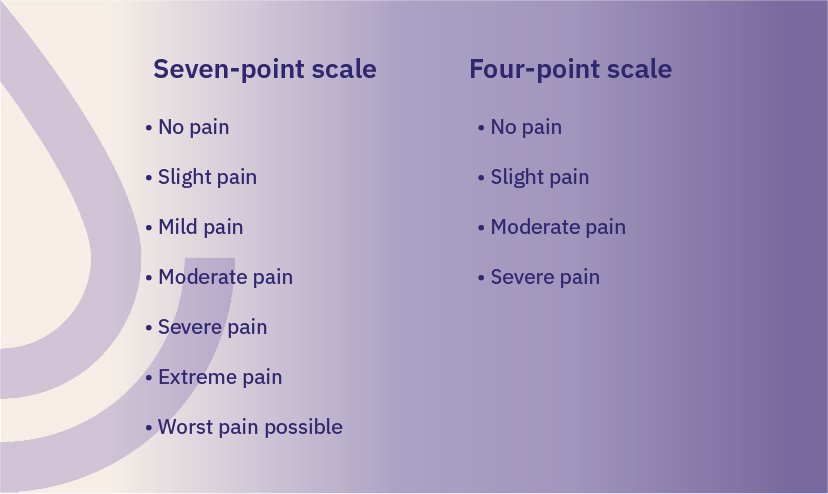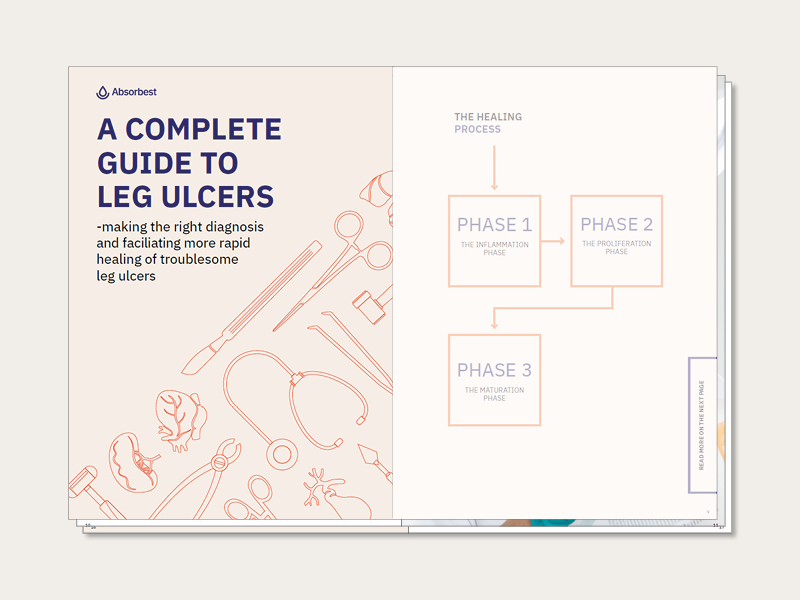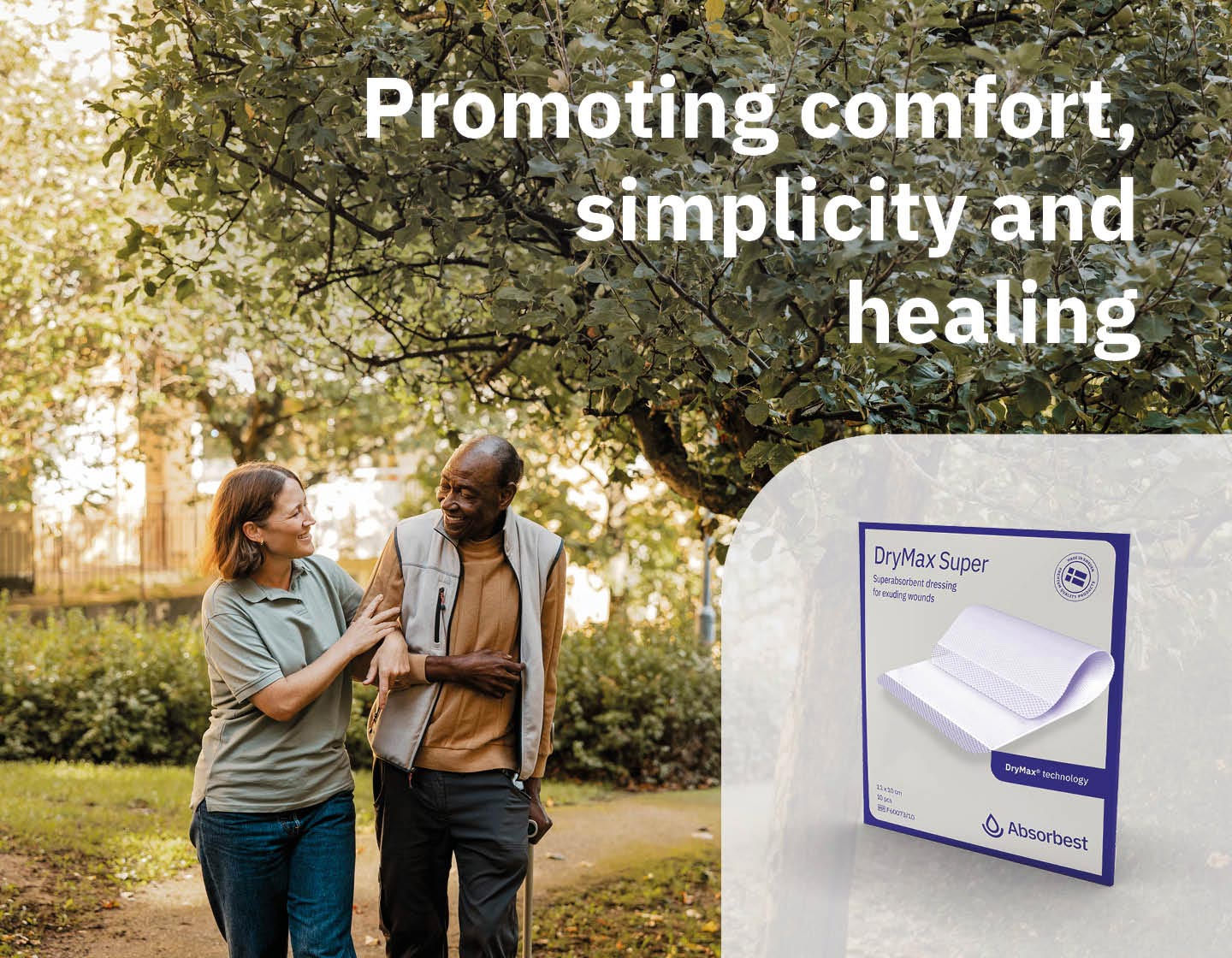
Pain is an individual, subjective experience that requires careful attention and management. By communicating openly and providing appropriate pain relief before dressing the wound, you can reduce the patient’s potential anxiety and fear of pain, thereby creating a more positive patient experience. It is also beneficial for the patient to receive premedication well in advance of the wound care procedure.
However, it is not only the sensory pain that influences the overall pain experience; expectations also play a role in the perception of pain. Therefore, fostering positive expectations in patients may lead to improved pain reduction.
![]()
Tip!
Distractions, such as music and relaxation methods, can significantly enhance a positive pain experience.
Clinicians often face time constraints and stressful working conditions. Providing adequate pain relief can be time-consuming, as the duration of action often accounts for a significant portion of the wound treatment process. It is crucial to manage the limited time available to deliver both pain relief and comprehensive wound care.
![]()
One-dimensional pain scales can help you assess the intensity of your patient’s pain, enabling you to make informed decisions about suitable pain relief measures promptly based on the patient’s needs and the available timeframe.
To evaluate perceived pain and promote communication between you, as a healthcare professional, and your patient, various pain assessment tools are employed. These tools should be simple for both you and your patients to use and understand.
Consistent use of pain assessment tools allows you, as a caregiver, to monitor the progression of pain over time and to take appropriate steps to alleviate pain.
Please provide your details and we will send you a download link to your e-mail.
Several pain scales can be used to estimate and assess a patient’s perceived pain. The three most common one-dimensional methods are the numerical scale (NRS), the verbal descriptor scale (VDS/VRS), and the visual analogue scale (VAS). These pain scales can provide you with a clear understanding of the patient’s perceived pain level, helping you adapt treatment accordingly.
All of these scales can be relevant, and the choice of scale is tailored to the patient’s needs. However, assessing more complex pain conditions requires more sophisticated measurement instruments that evaluate pain across multiple dimensions: physical, psychological, social, emotional, and existential.
The numerical scale is a widely used method for measuring pain. It involves asking the patient to rate their pain on a scale from 0 to 10, where 0 signifies no pain and 10 represents the worst possible pain. The patient chooses the number that best describes their pain level.

On the visual analogue scale, the patient marks a point along the line to indicate perceived pain intensity. The line ranges from “no pain” to “worst imaginable pain.” By measuring the distance from the start to the mark, you obtain a visual representation of the pain, allowing you as a nurse to accurately assess and document the pain intensity.

The verbal descriptor scale, also known as a verbal rating scale, is a commonly used method for assessing pain. This scale asks the patient to describe their pain intensity using words. It can range from a simple scale with few options (no pain, mild pain, moderate pain, severe pain) to a more detailed scale with additional word choices to express different levels of pain.
The patient chooses the word that best describes their level of pain. Using a verbal descriptor scale provides a more detailed understanding of the pain, allowing you to gain a better insight into the patient’s experience. Verbal descriptor scales can be helpful when patients find it challenging to use numerical scales.


Our “Complete Guide to leg ulcers“ focuses primarily on hard-to-heal venous leg ulcers.
Receive guidance on treatment measures, healing phases, cleaning, and appropriate dressings that can impact and influence the long-term healing process.

DryMax Super is a superabsorbent primary dressing designed to manage exuding wounds and promote undisturbed wound healing, allowing your patients to focus on healing, not pain.
https://www.vardhandboken.se/vard-och-behandling/akut-bedomning-och-skattning/smartskattning-av-akut-och-postoperativ-smarta/smartskattningsinstrument/ (Hämtad 2023-05-15)
Lindholm C. Sår. Uppl 4:2 Studentlitteratur AB, 2018